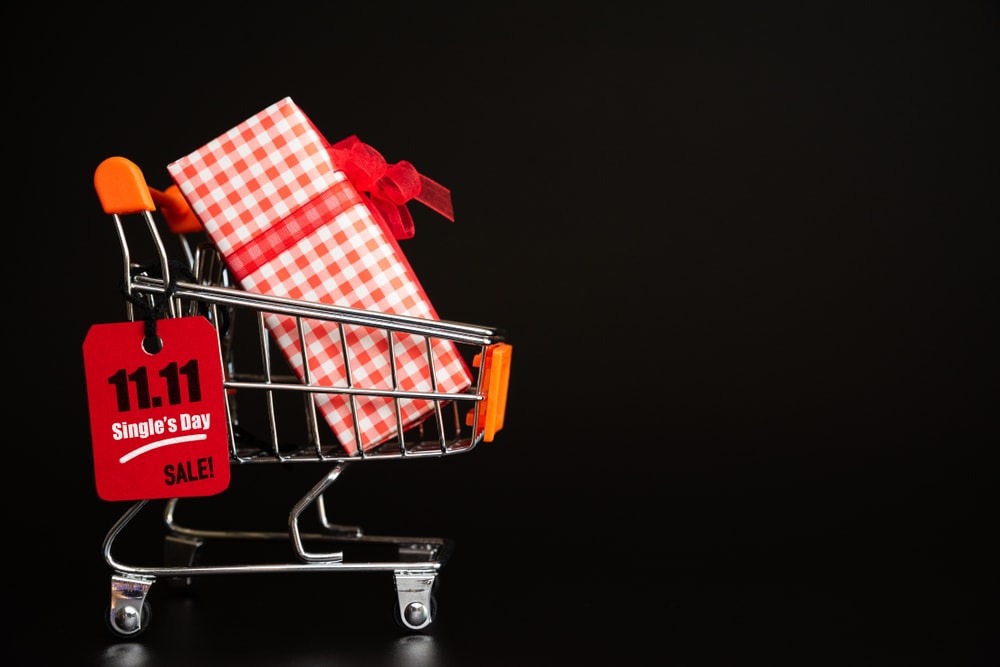The priority for most brands as Q3 draws to a close is ensuring that plans have been finalised and locked in for Singles’ Day. The shopping festival has now become a month-long opportunity to gain more traction through e-commerce stores, write Ryan Molloy and Frank Ren from RedFern Digital
There are three major components to Singles’ Day (falling on 11 November and also known as 11.11 or Double 11) that brands need to take into consideration: the pre-warm-up, the warm-up and the day itself.
The pre-warm-up period involves trying to build brand awareness, increasing sales within your store and negotiating with the platforms for resources that can be provided to support traffic. Often brands will use social media campaigns to create noise and hype, as well as using live streaming to ramp up sales. This takes place from early September until the first day of pre-sales.
Pre-sales start on 20 October, and the first day usually brings strong sales and headlines from the larger live streamers. During this period, consumers will pay deposits for products that they will later check out if they still feel the same way towards the end of the pre-sale period. Most traffic is produced on the first and last days of the pre-sales period. Brands usually spend most of their time driving as much traffic as possible through in-app display marketing on platforms like Taobao and JD.com. Social media, although still useful in this period, loses its effect as KOLs cannot provide attractive enough VIP discounts since most products are already relatively discounted.
During the 11.11 warm-up period, platforms such as Xiaohongshu should first be used to build up hype and noise (depending on the brand category). Another important note regarding Xiaohongshu is that a lot of the content does not necessarily trend for weeks after it is posted, so it gives more time for that content to grow.
Later, nearer to the day itself, WeChat and Douyin can be used to amplify noise and drive sales as more direct-to-sale platforms. Finally, once the brand enters into the discount stage and sales have started to reach their peak, live streaming can then be turned on. It is crucial to book live steamers far in advance as once the festival nears, many streamers become overpriced. It is suggested that brands focus on non-celebrity streamers (sometimes known as micro-influencers or key opinion creators) who can provide a better ROI. It is important to note that although the top five streamers in any category generally provide the best ROI, live streaming is always a risk and the ROI of streams from the same person can change tremendously.
Finally, the big day, 11 November, arrives. The majority of sales take place on this day and traffic is at its highest by far. All brands listed on e-commerce platforms will see some form of an increase in sales regardless of their discounts as traffic on platforms skyrockets. Most shoppers will log on during the early hours of the morning in order to get the very best deals on offer and many of the larger stores will see stock sell out of their best value items before midday.
In order to have an effective Singles’ Day, brands need to ensure that they take part in all three stages of the journey.
In order to have an effective Singles’ Day, brands need to ensure that they take part in all three stages of the journey. What is clear for many newer brands in the market is that jumping online in time for Singles’ Day will not achieve sales targets, and if they miss out on previous stages or have not built sufficient sales, they may find that they have a disappointing event overall.
Another prerequisite is pricing and profitability. Singles’ Day does not simply function as a time for brands to cash in on the hard work of building brand recognition and loyalty; rather, it is a time to once again invest in increasing the profile of your store, lift sales, welcome first-time consumers, and then prepare for the year ahead. Discounting, live streaming commissions and other costs mean that volume, rather than profitability, is the main goal.




